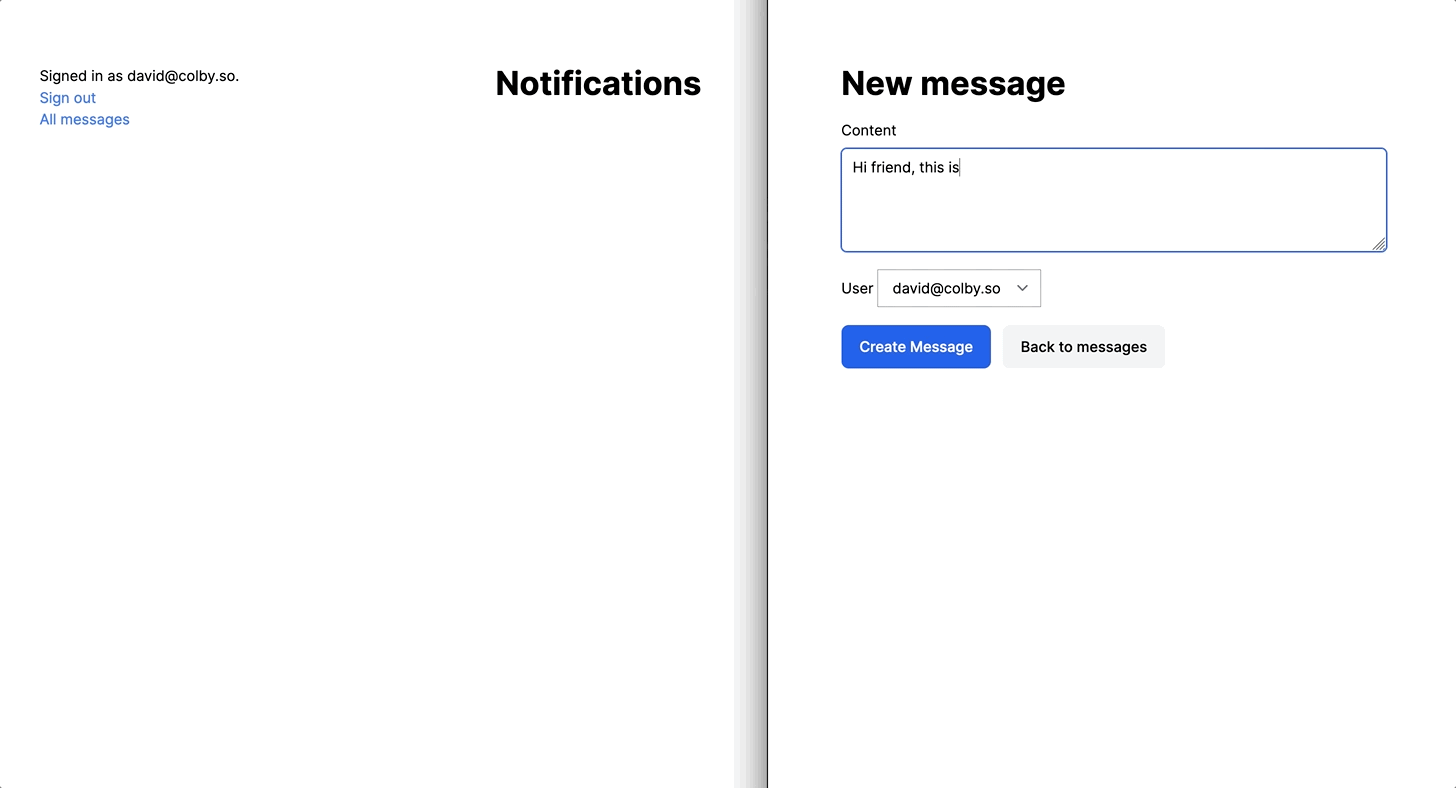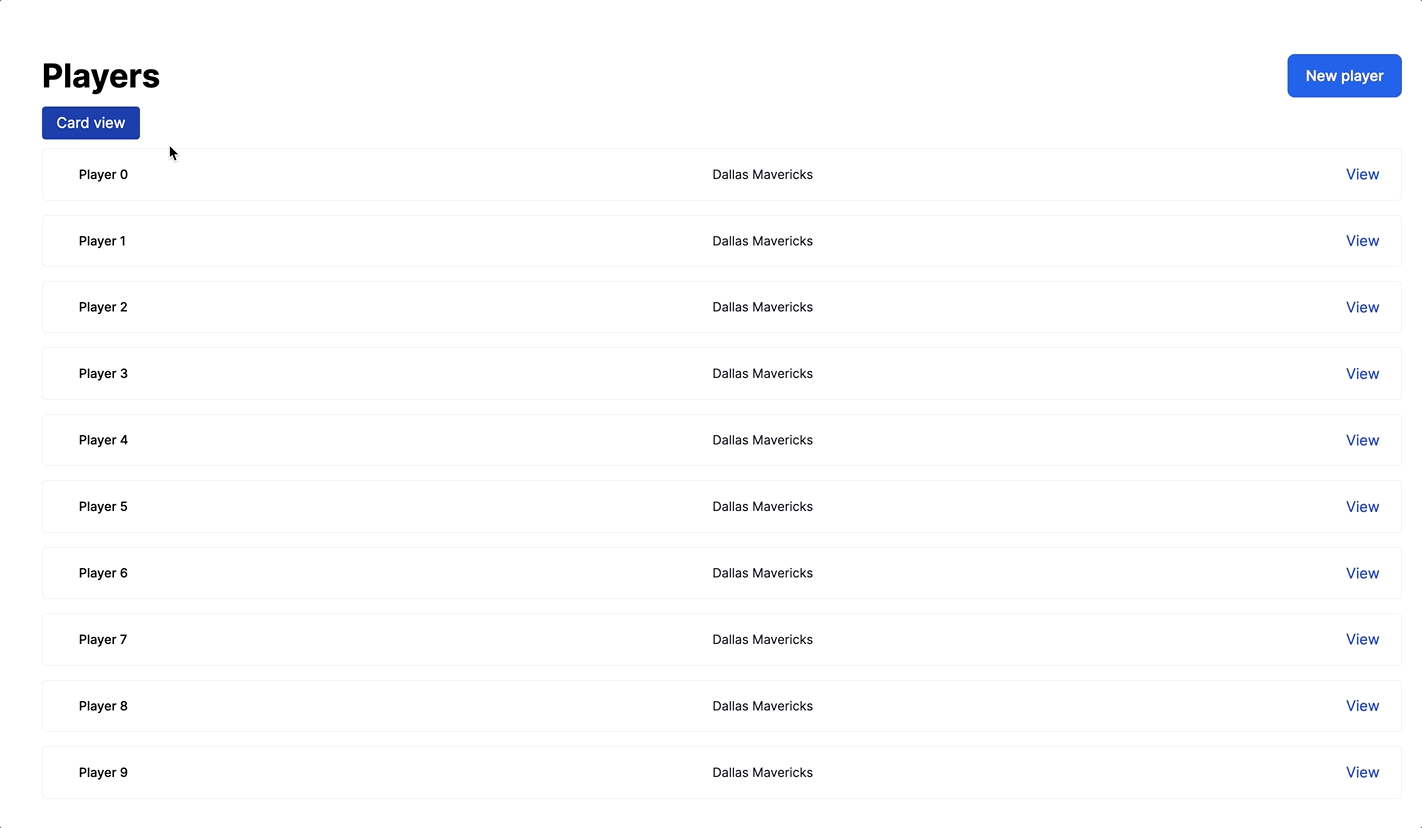21 Mar 2022
A nearly-universal need in web applications is user notifications. An event happens in the application that the user cares about, and you inform the user of the event. A common example is in applications that have a commenting system — when a user mentions another user in a comment, the application notifies the mentioned user of that comment through email.
The channel(s) used to notify users of new important events depends on the application but the path very often includes an in-app notification widget that shows the user their latest notifications. Other common options include emails, text messages, Slack, and Discord.
Rails developers that need to add a notification system to their application often turn to Noticed. Noticed is a gem that makes it easy to add new, multi-channel notifications to Rails applications.
Today, we are going to take a look at how Noticed works by using Noticed to implement in-app user notifications. We will send those notifications to logged in users in real-time with Turbo Streams and, for extra fun, we will load user notifications inside of a Turbo Frame.
When we are finished, our application will work like this:

Before we begin, this tutorial assumes that you are comfortable building simple Ruby on Rails applications independently. No prior knowledge of Turbo or Noticed is required.
Let’s dive in!
Read the rest
21-minute read
07 Mar 2022
Kredis is a new gem that makes it easier to work with Redis keys in Ruby on Rails. Kredis was added a suggested gem for new Rails applications starting with the release of Rails 7.0 in December of 2021 and is likely to become a larger force in the Rails world in the coming years.
From the documentation, Kredis “encapsulates higher-level types and data structures around a single key, so you can interact with them as coherent objects rather than isolated procedural commands”.
What this means for us is that we can use Kredis to make it easier to use Redis as a data store in our application. With Kredis, it is simple to use Redis to read and write complex data structures. Kredis’ integration with ActiveRecord allows us to work with Redis data alongside existing models.
Today we will use Kredis to power a card/list view toggle for a resource’s index page, persisting the user’s view preference across requests. This tutorial will offer a gentle introduction into how Kredis works while exploring how Kredis can help us implement a common real-world UX pattern.
We will also add a bit of Turbo functionality in the form of a Turbo Frame to wrap the list of items to make applying the user’s view preference a bit more efficient.
When we are finished, our application will work like this:

Before we begin, this tutorial is best suited for folks with experience building simple applications with Ruby on Rails. If you have never used Rails before, this tutorial will be difficult to follow. You do not need any prior experience with Turbo or Kredis to follow along with this tutorial.
As usual, you can find the complete code for this application on Github.
Let’s start building.
Read the rest
25-minute read
02 Mar 2022
This newsletter went out via email to the Hotwiring Rails subscriber list, but I know that not everyone wants another email cluttering up their inbox. For those folks, I’ll always publish the full content of the newletter here too, so you can get all the content with none of the emails.
Thoughts or feedback on how I can make this newsletter more valuable? Have something you’d like to include in next month’s edition? Send me an email, or find me on Twitter.
Read the rest
Six-minute read

